Welcome to a captivating journey through history, where the grandeur of ancient civilizations comes to life through the splendid palaces of Nimrud and Nineveh.
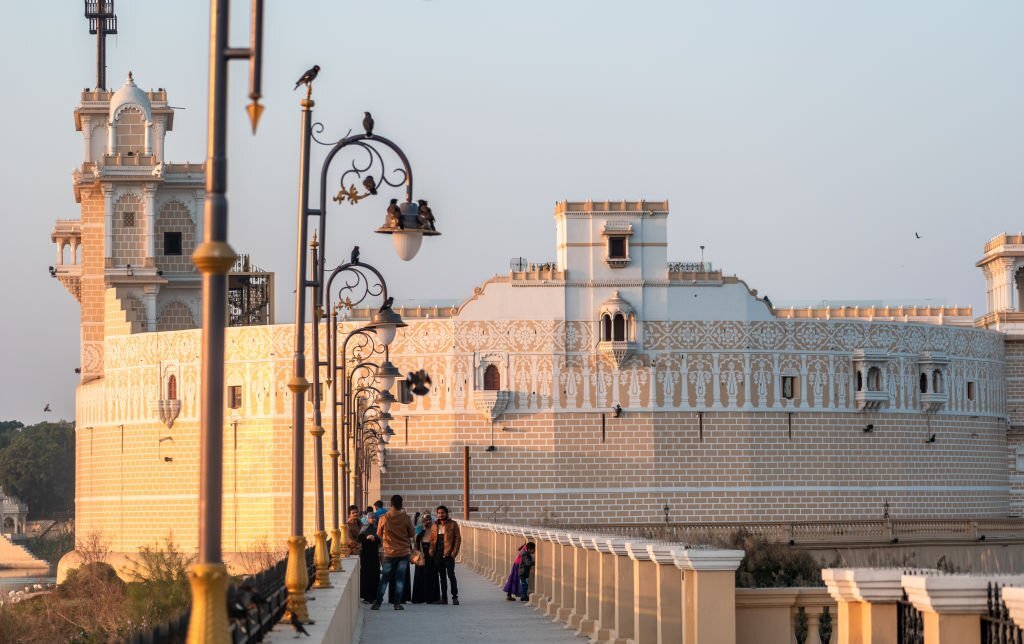 These two names resonate with the echoes of empires that once thrived in the heart of Mesopotamia, leaving behind a rich tapestry of architectural marvels and cultural heritage.
These two names resonate with the echoes of empires that once thrived in the heart of Mesopotamia, leaving behind a rich tapestry of architectural marvels and cultural heritage.
Nimrud and Nineveh, located in present-day Iraq, stand as testaments to the incredible achievements of the Assyrian Empire. These ancient cities flourished over two millennia ago, boasting architectural brilliance that reflected the power, wealth, and innovation of their time.
The palaces that graced these cities were not merely structures; they were embodiments of royal authority, centers of administration, and hubs of artistic expression.
As we embark on this exploration, we will uncover the intricate carvings, majestic statues, and opulent chambers that adorned these palaces.
We will delve into the lives of the rulers who orchestrated their construction, from the legendary Ashurnasirpal II of Nimrud to the famed Sennacherib of Nineveh. Each palace tells a unique story, etching tales of conquests, cultural exchange, and the remarkable achievements of ancient engineering.
Contents
- 1 Ashur
- 2 Nimrud
- 3 Nimrud Buildings and Bas-Reliefs
- 4 Nineveh
- 5 Nivenah Layout and Buildings
- 6 The Palaces of Nimrud and Nineveh: Architectural Marvels
- 7 Artistry and Symbolism in Nimrud and Nineveh
- 8 Cultural Significance and Historical Insights
- 9 Decline and Rediscovery
- 10 on Efforts and Archaeological Discoveries
- 11 Conclusion
Ashur
Ashur, also known as Assur, was an ancient city located in northern Mesopotamia, in what is now modern-day Iraq. It was one of the oldest and most significant cities in the region, serving as the capital of the Assyrian Empire. If you have a passion for uncovering the historical significance of ancient cities and wish to explore Jersey’s famous spots, be sure to visit the page on Explore Jersey’s Famous Spots to discover the intriguing landmarks and attractions that define New Jersey’s cultural heritage.
The city’s history dates back to the third millennium BCE, and it played a crucial role in shaping the political, cultural, and religious landscape of ancient Mesopotamia.
Ashur was dedicated to the god of the same name, who was considered the chief deity of the Assyrian pantheon. The city’s prominence as a religious center contributed to its political power and influence.
Over time, the Assyrian Empire expanded its territories and became a dominant force in the ancient Near East. The empire reached its zenith during the 8th and 7th centuries BCE, with Ashur serving as its spiritual heart.
The city was known for its impressive architecture, including ziggurats (stepped pyramids) and grand palaces adorned with intricate carvings and sculptures. The Assyrians were known for their military prowess and administrative innovations, as well as their artistic achievements.
However, the fortunes of Ashur and the Assyrian Empire eventually declined. In 614 BCE, the city was sacked by the Babylonians and Medes, leading to the downfall of the empire. Ashur lost its political significance, though it retained cultural and historical importance.
Nimrud
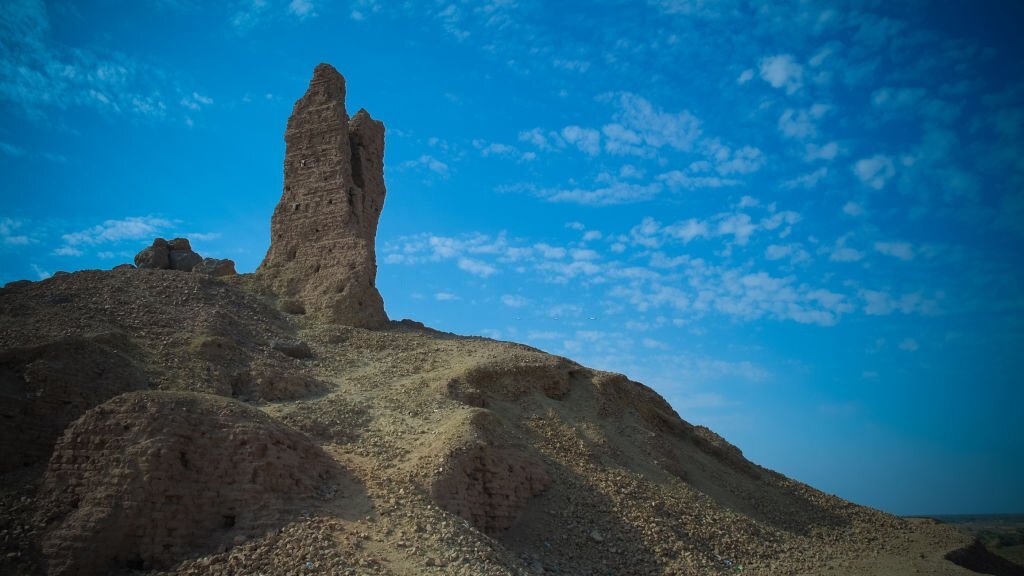 Nimrud, also known as Kalhu or Calah, is an ancient archaeological site located in present-day Iraq. It holds great historical significance as it was the capital of the Neo-Assyrian Empire during its peak. The city flourished primarily during the 9th and 8th centuries BCE.
Nimrud, also known as Kalhu or Calah, is an ancient archaeological site located in present-day Iraq. It holds great historical significance as it was the capital of the Neo-Assyrian Empire during its peak. The city flourished primarily during the 9th and 8th centuries BCE.
Situated along the eastern bank of the Tigris River, Nimrud played a vital role in the Assyrian Empire’s administration, trade, and military activities.
The city of Nimrud garnered acclaim for its remarkable architecture, boasting magnificent palaces and temples adorned with intricate sculptures and reliefs. Among its many architectural marvels, the Northwest Palace stands out as a testament to the city’s artistic prowess. This palace, celebrated for its opulent decorations, featured vivid depictions of royal hunts, religious ceremonies, and cultural accomplishments. To delve deeper into Oklahoma’s rich cultural heritage, explore Oklahoma’s Claim to Fame on Tales of Travelers, where you can discover more about the state’s noteworthy contributions to history and culture.
Nimrud’s influence extended across the ancient world, and its art and artifacts have been discovered in various archaeological expeditions. However, the site has also faced challenges over the years, including looting and damage during periods of conflict in the region.
Nimrud Buildings and Bas-Reliefs
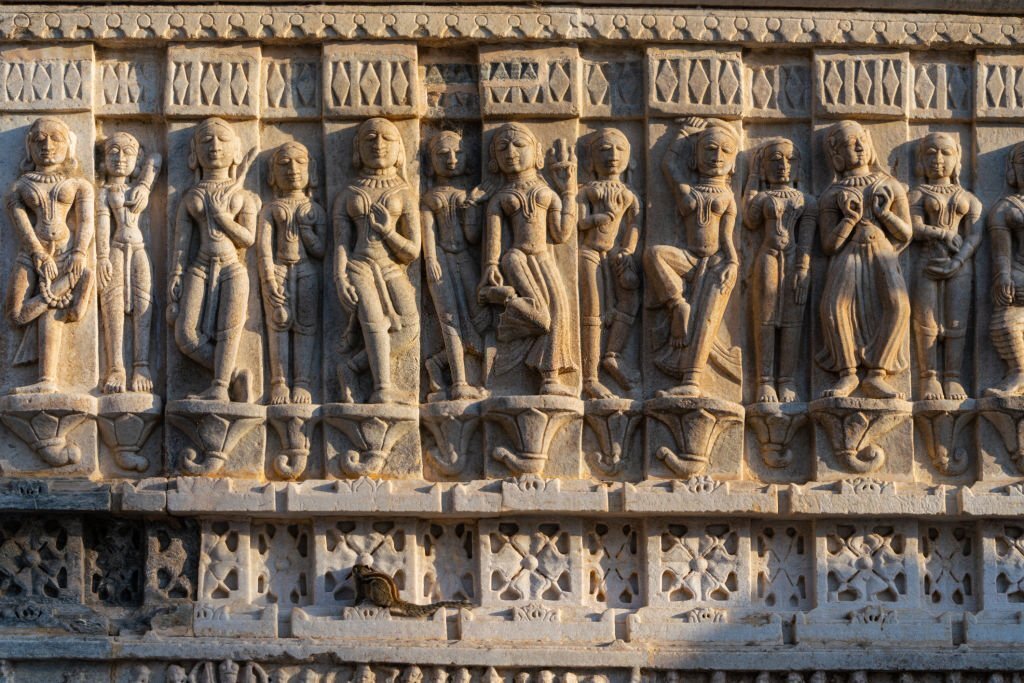 Nimrud, also known as Kalhu or Calah, was an ancient Assyrian city situated in present-day Iraq. It thrived as the capital of the Assyrian Empire during the 9th and 8th centuries BCE.
Nimrud, also known as Kalhu or Calah, was an ancient Assyrian city situated in present-day Iraq. It thrived as the capital of the Assyrian Empire during the 9th and 8th centuries BCE.
If you’re interested in exploring the rich history of ancient civilizations, you might also find the concept of “Farm-to-table dining” intriguing, as it reflects how contemporary Vermont is known for preserving and celebrating its historical roots.
For more insights into Vermont’s cultural heritage and its modern culinary scene, check out this informative page on TalesofTravelers.com: Farm-to-table dining in Vermont.
The city is renowned for its impressive buildings and intricate bas-reliefs, which provide valuable insights into the art, culture, and history of the ancient Assyrians.
Buildings: Nimrud was adorned with grand palaces and temples constructed by various Assyrian kings, notably Ashurnasirpal II and Tiglath-Pileser III.
The palaces featured exquisite architectural designs, with intricately carved stone walls, ornate facades, and sprawling courtyards. The structures served as administrative centers and symbols of the empire’s power and opulence.
Bas-Reliefs: One of the most remarkable aspects of Nimrud is its bas-reliefs, which are carved artworks on stone walls that depict scenes from various aspects of Assyrian life.
These bas-reliefs showcase a wide range of subjects, including royal hunts, military campaigns, religious rituals, and cultural events. They provide valuable historical information about the Assyrian society, their military tactics, religious practices, and interactions with neighboring cultures.
Nineveh
Nineveh, an ancient city situated in what is modern-day Mosul, Iraq, held a prominent position in the annals of history. As the capital of the mighty Assyrian Empire, it stood as a symbol of power and influence. The city’s roots trace back to the third millennium BCE, and it soared to its zenith during the 7th century BCE.
To delve deeper into the historical significance of cities like Nineveh, consider exploring “Illinois History Highlights” on TalesofTravelers.com, a platform dedicated to unraveling the intriguing stories of the past.
Known for its impressive architecture and advanced urban planning, Nineveh was surrounded by massive defensive walls and contained numerous grand palaces, temples, and other structures.
The city’s most famous ruler was King Sennacherib, who expanded and beautified the city, constructing a lavish palace and creating an extensive system of canals and gardens.
The fall of Nineveh came in 612 BCE, when a coalition of Babylonians and Medes captured and sacked the city, bringing an end to the Assyrian Empire. The city was subsequently abandoned and its ruins lay largely forgotten for centuries.
However, archaeological excavations in the 19th and 20th centuries uncovered the remains of Nineveh, revealing its historical significance and offering insights into ancient Assyrian culture, architecture, and society.
Nivenah Layout and Buildings
“Nivenah Layout and Buildings” appears to be a combination of terms that suggest a real estate development or urban planning project. However, without specific context or further information, it’s challenging to provide a precise description. Here’s a general overview:
“Nivenah Layout and Buildings” likely refers to a planned layout or design for a residential or commercial area. The term “Layout” implies the organization and arrangement of various elements within a space, such as roads, plots, green spaces, and infrastructure.
“Buildings” suggest that within this layout, there are structures being constructed, which could include residential homes, offices, shops, or other types of buildings. These structures could vary in size, function, and architectural design based on the intended purpose of the layout.
In urban planning and real estate development, a well-designed layout takes into account factors such as traffic flow, accessibility, aesthetics, and environmental sustainability. The arrangement of buildings and open spaces can significantly impact the quality of life for residents or the success of businesses in the area.
The Palaces of Nimrud and Nineveh: Architectural Marvels
The Palaces of Nimrud and Nineveh are historically significant archaeological sites located in ancient Mesopotamia, modern-day Iraq. These palaces hold crucial insights into the grandeur and cultural achievements of the Assyrian civilization, which thrived during the 9th to 7th centuries BCE.
Nimrud, also known as Kalhu, was the capital of the Assyrian Empire during the reign of King Ashurnasirpal II. The palace complex at Nimrud is renowned for its intricately carved stone reliefs, depicting scenes of royal ceremonies, conquests, and divine interactions.
These reliefs provide valuable information about the military campaigns, religious practices, and societal norms of the time.
Nineveh, on the other hand, was the capital during the reign of later Assyrian kings like Sennacherib and Ashurbanipal. The palaces at Nineveh are famous for their architectural innovations, including advanced irrigation systems.
Massive stone sculptures, and impressive libraries that contained a wealth of clay tablets with cuneiform inscriptions. These inscriptions offer insights into literature, science, and historical records of the Assyrian civilization.
Artistry and Symbolism in Nimrud and Nineveh
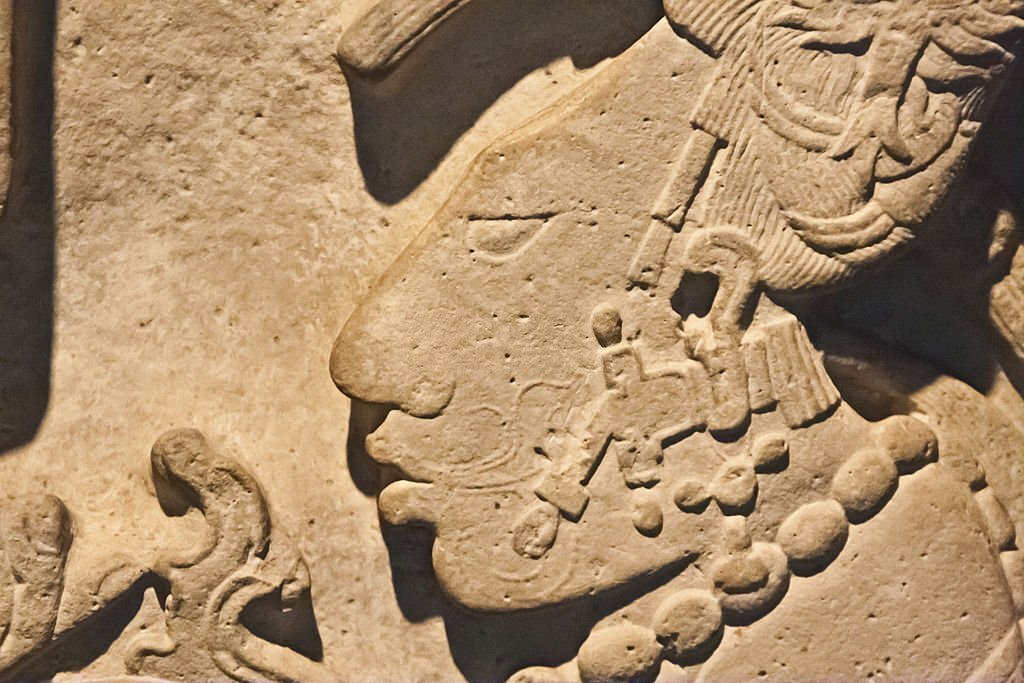 The ancient cities of Nimrud and Nineveh, located in present-day Iraq, were centers of remarkable artistic achievements that left an indelible mark on history.
The ancient cities of Nimrud and Nineveh, located in present-day Iraq, were centers of remarkable artistic achievements that left an indelible mark on history.
These cities were prominent capitals of the Assyrian Empire, flourishing during different periods. The artistry of these cities can be witnessed through their intricate and awe-inspiring sculptures, reliefs, and architectural wonders.
The artists of Nimrud and Nineveh demonstrated exceptional skill in various mediums. Their sculptures and bas-reliefs adorned the grand palaces and temples of these cities, depicting scenes of religious rituals, warfare, royal hunts, and courtly life.
The mastery of these artists lay not only in their ability to render lifelike forms but also in their capacity to convey emotion and narrative through their art. If you’re interested in exploring more of such artistic expressions, you’ll find a wealth of inspiration in Illinois, particularly in its vibrant city, Chicago. Chicago is renowned for its rich artistic heritage and is home to a plethora of Historic Chicago spots that have played a significant role in shaping the city’s cultural identity
Symbolism in Nimrud and Nineveh: Symbolism played a crucial role in the art and culture of Nimrud and Nineveh, providing deeper layers of meaning to their artistic creations.
The Assyrians employed symbolism to convey religious beliefs, ideological messages, and the power of their empire. For instance, the lamassu, a winged human-headed bull or lion, stood as a protective symbol at city gates and palaces, warding off evil spirits and displaying the might of the empire.
Cultural Significance and Historical Insights
The cities’ artifacts provide historians with valuable insights into Assyrian culture, governance, and daily life. From the meticulous carvings depicting military campaigns to the depictions of religious rituals, these remnants offer a vivid snapshot of an era long past.
Cultural Significance: Cultural significance refers to the importance, value, and impact that a particular element holds within a society or community. This can include traditions, art, language, rituals, symbols, and practices that are deeply ingrained in the identity of a group of people.
These significant cultural elements often reflect the shared history, beliefs, values, and experiences of the community. They play a crucial role in shaping a sense of belonging, preserving heritage, and passing on traditions from one generation to the next.
Cultural significance extends beyond the present, connecting individuals to their roots and influencing the way they interact with the world around them.
Decline and Rediscovery
The eventual decline of Nimrud and Nineveh remains a subject of historical debate. While various factors contributed to their downfall, the cities were lost to time until the 19th century, when the archaeological efforts of Austen Henry Layard brought them back to the world’s attention.
Decline refers to a gradual deterioration or decrease in the quality, significance, or state of something. It often indicates a downward trend or weakening of a particular entity, such as a civilization, a cultural practice, an industry, or an individual’s health.
Decline can result from various factors such as economic shifts, social changes, technological advancements, environmental issues, or mismanagement.
Rediscovery is the act of re-exploring, re-examining, or bringing back into prominence something that was previously known, practiced, or appreciated but had faded from attention or recognition.
Rediscovery can pertain to various aspects like historical artifacts, forgotten knowledge, artistic techniques, cultural traditions, or even personal interests.
on Efforts and Archaeological Discoveries
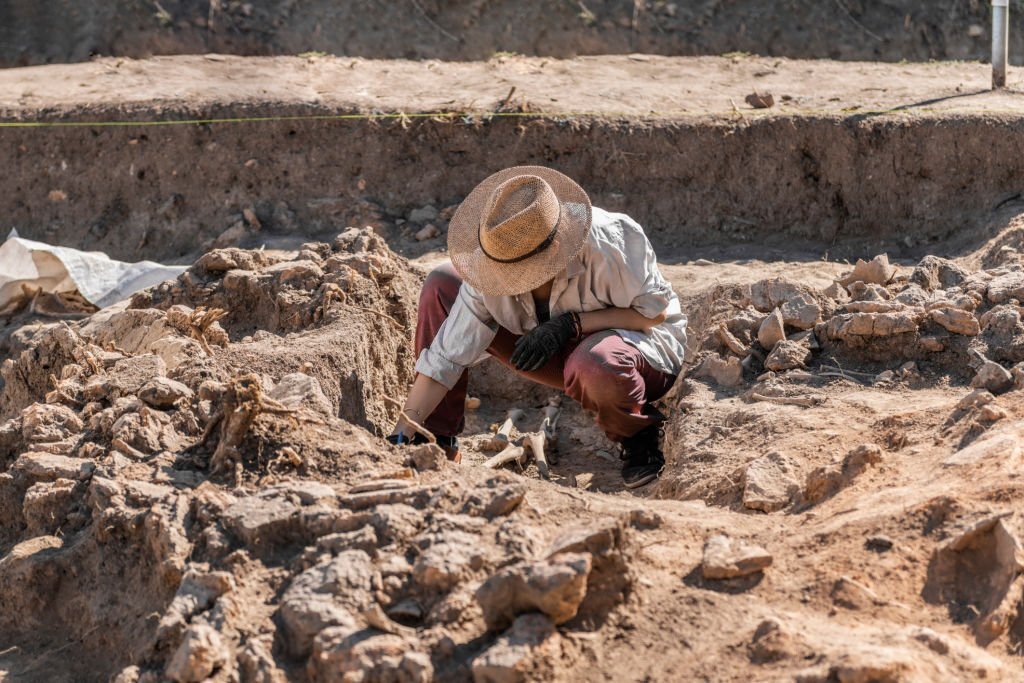 Archaeology is a fascinating field that involves uncovering and studying the remnants of past civilizations to understand their history, culture, and way of life.
Archaeology is a fascinating field that involves uncovering and studying the remnants of past civilizations to understand their history, culture, and way of life.
Efforts in archaeology encompass a wide range of activities aimed at excavating, documenting, preserving, and interpreting archaeological sites and artifacts. These efforts are vital for piecing together the puzzle of human history and shedding light on the evolution of societies.
Archaeological discoveries are the fruits of these dedicated efforts. They offer insights into ancient technologies, artistic achievements, social structures, and even daily life of past societies. Such discoveries often challenge or confirm existing historical narratives and provide new perspectives on our shared human heritage.
Efforts in archaeology involve meticulous planning and execution. Archaeologists carefully select excavation sites based on historical records, geographical features, and sometimes even advanced technology like ground-penetrating radar.
The process involves systematic digging, recording the precise location and context of each artifact, and analyzing layers of soil to establish a chronological sequence. These artifacts and contextual information help researchers piece together the story of the people who inhabited these places.
Conclusion
In conclusion, the exploration of the palaces of Nimrud and Nineveh offers a captivating journey into the grandeur and sophistication of ancient civilizations.
These archaeological marvels stand as testament to the remarkable architectural and artistic achievements of the Assyrian empire. The intricate carvings, majestic sculptures, and intricate detailing within these palaces provide invaluable insights into the lives, beliefs, and achievements of the people who once inhabited these spaces.
By delving into the past through these palaces, we gain a deeper understanding of the cultural and historical contexts that shaped the development of human societies.
The preservation and study of these sites not only allow us to appreciate the artistic talents of a bygone era but also encourage us to contemplate the connections between our modern world and the legacies of our ancestors.
Ultimately, the exploration of Nimrud and Nineveh’s palaces beckons us to marvel at the enduring echoes of history and reflect on the shared essence of human creativity across time.

